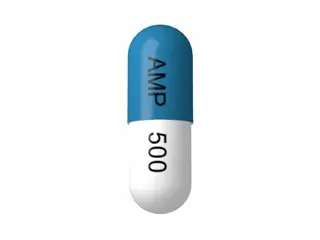| Package | Dosage | Price | Price per Dose | |
|---|---|---|---|---|
| Dosage: 250mg | ||||
| 270 pill | 250mg | CAD213.31 | CAD0.79 | |
| 180 pill | 250mg | CAD146.05 | CAD0.81 | |
| 120 pill | 250mg | CAD99.92 | CAD0.83 | |
| 90 pill | 250mg | CAD78.78 | CAD0.86 | |
| Dosage: 500mg | ||||
| 270 pill | 500mg | CAD467.01 | CAD1.73 | |
| 180 pill | 500mg | CAD319.02 | CAD1.77 | |
| 120 pill | 500mg | CAD219.08 | CAD1.83 | |
| 90 pill | 500mg | CAD178.72 | CAD1.98 | |
| 60 pill | 500mg | CAD134.52 | CAD2.23 | |
| 30 pill | 500mg | CAD78.78 | CAD2.63 | |
| 20 pill | 500mg | CAD59.56 | CAD2.98 | |
| 10 pill | 500mg | CAD30.73 | CAD3.02 | |

Acillin Description
Introduction to Acillin
Acillin is a medication that is often prescribed to treat bacterial infections. It belongs to the class of antibiotics known as penicillins. This substance works by inhibiting the growth of bacteria, helping the immune system to eliminate the infection more effectively. Acillin is used to combat a variety of bacterial illnesses, including respiratory tract infections, skin infections, and urinary tract infections. Its broad-spectrum activity makes it a versatile choice for many medical conditions. Patients usually receive Acillin under the guidance of a healthcare professional to ensure proper usage and dosage.
Effectiveness and Spectrum of Action
One of the main reasons Acillin is widely prescribed is its proven effectiveness against susceptible bacteria. It is particularly active against gram-positive bacteria such as streptococci, staphylococci, and pneumococci. Depending on the nature and severity of the infection, Acillin can be prescribed in different dosages and formulations. Its mechanism of action involves disrupting the synthesis of bacterial cell walls, which leads to the destruction of the bacteria. This process helps in clearing the infection faster than some other antibiotics. However, it is crucial to use Acillin exactly as directed to prevent resistance development. It might not be effective against infections caused by bacteria that produce beta-lactamase enzymes unless combined with beta-lactamase inhibitors.
Usage and Dosage
Acillin is typically available in oral forms such as tablets, capsules, or liquid suspensions. The dosage depends on the patient's age, weight, the severity of the infection, and the type of bacteria involved. Usually, it is taken two to three times a day, with or without food. It's essential to complete the entire course of treatment, even if symptoms improve before finishing the medication. Skipping doses or stopping early can lead to incomplete eradication of bacteria and increase the chance of resistance. Patients should follow their healthcare provider's instructions carefully and inform them of any side effects or unusual reactions.
Potential Side Effects and Precautions
While Acillin is generally well-tolerated, some individuals may experience side effects. Common reactions include gastrointestinal issues such as nausea, vomiting, diarrhea, and abdominal discomfort. Allergic reactions are also possible, from mild rashes to severe anaphylactic responses. Patients with a history of penicillin allergy should notify their doctor before starting Acillin. It is important to inform the healthcare provider about any other medications or medical conditions to avoid potential interactions. Superficial monitoring during the course of treatment ensures that any adverse effects are promptly addressed. If severe reactions or signs of an allergy develop, immediate medical attention is necessary.
Advantages and Considerations
One advantage of Acillin is its proven efficacy and relatively low cost. Its well-understood pharmacology provides confidence in its use for various bacterial infections. However, like all antibiotics, it should be used responsibly to prevent antibiotic resistance. Doctors often consider local resistance patterns before prescribing Acillin. It is also essential to avoid unnecessary use, which can contribute to resistant strains and reduce its future effectiveness. For most patients, when used correctly, Acillin offers quick symptom relief and helps in clearing infections efficiently.
Conclusion
In summary, Acillin remains a reliable choice in the treatment of numerous bacterial infections. Its ability to effectively target bacteria, combined with careful dosage and monitoring, makes it a valuable tool for healthcare providers. Patients should adhere strictly to prescribed instructions, report any adverse effects, and avoid self-medication. Proper use of Acillin supports not only individual recovery but also the broader effort to combat antibiotic resistance. When used responsibly, Acillin can significantly contribute to resolving bacterial infections quickly and safely.
See Also
